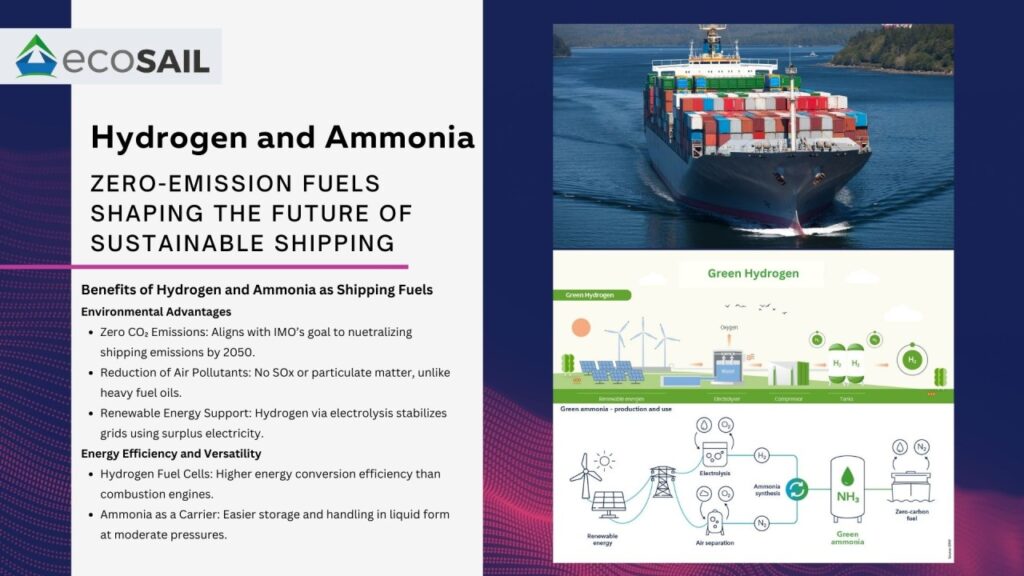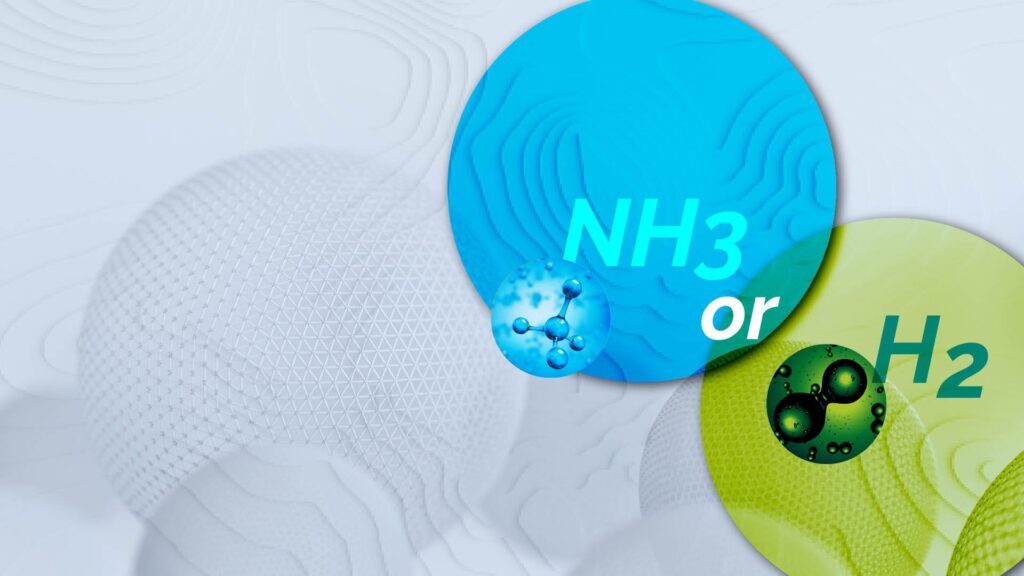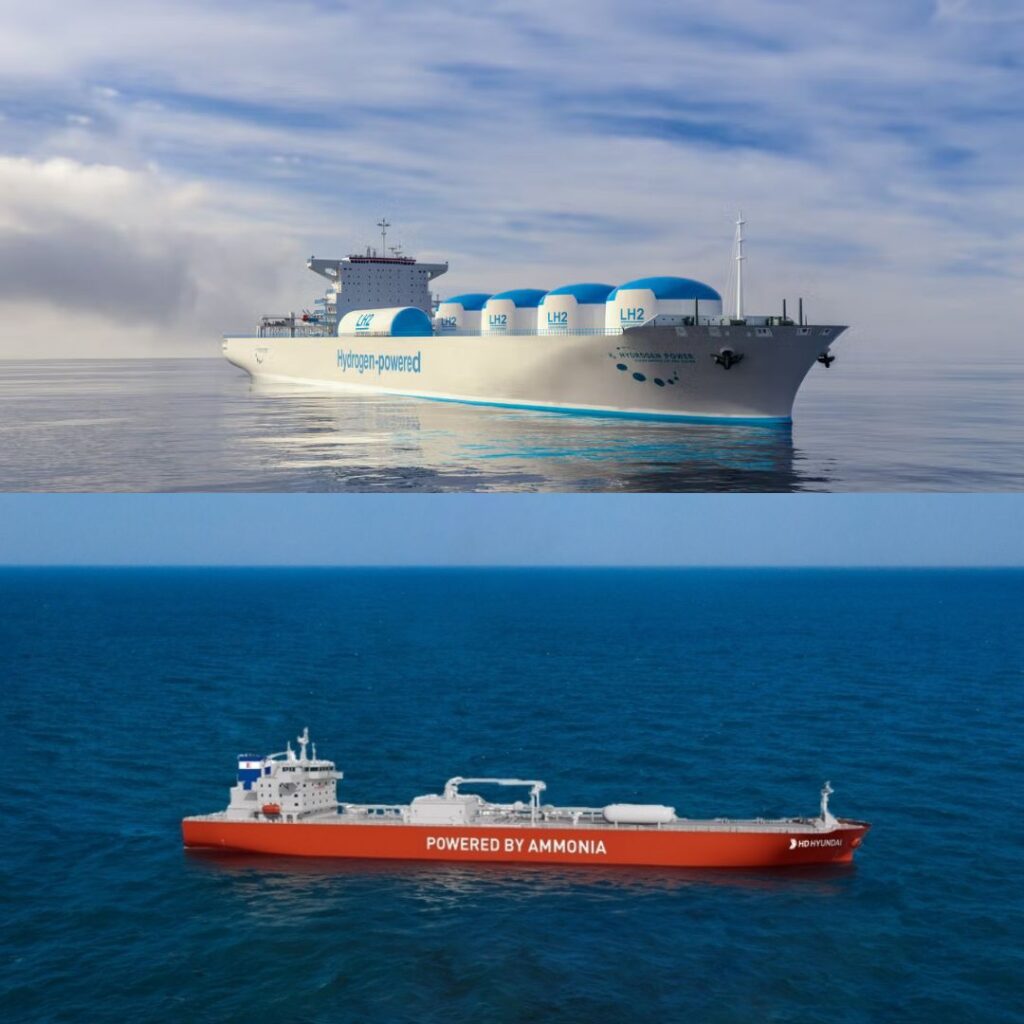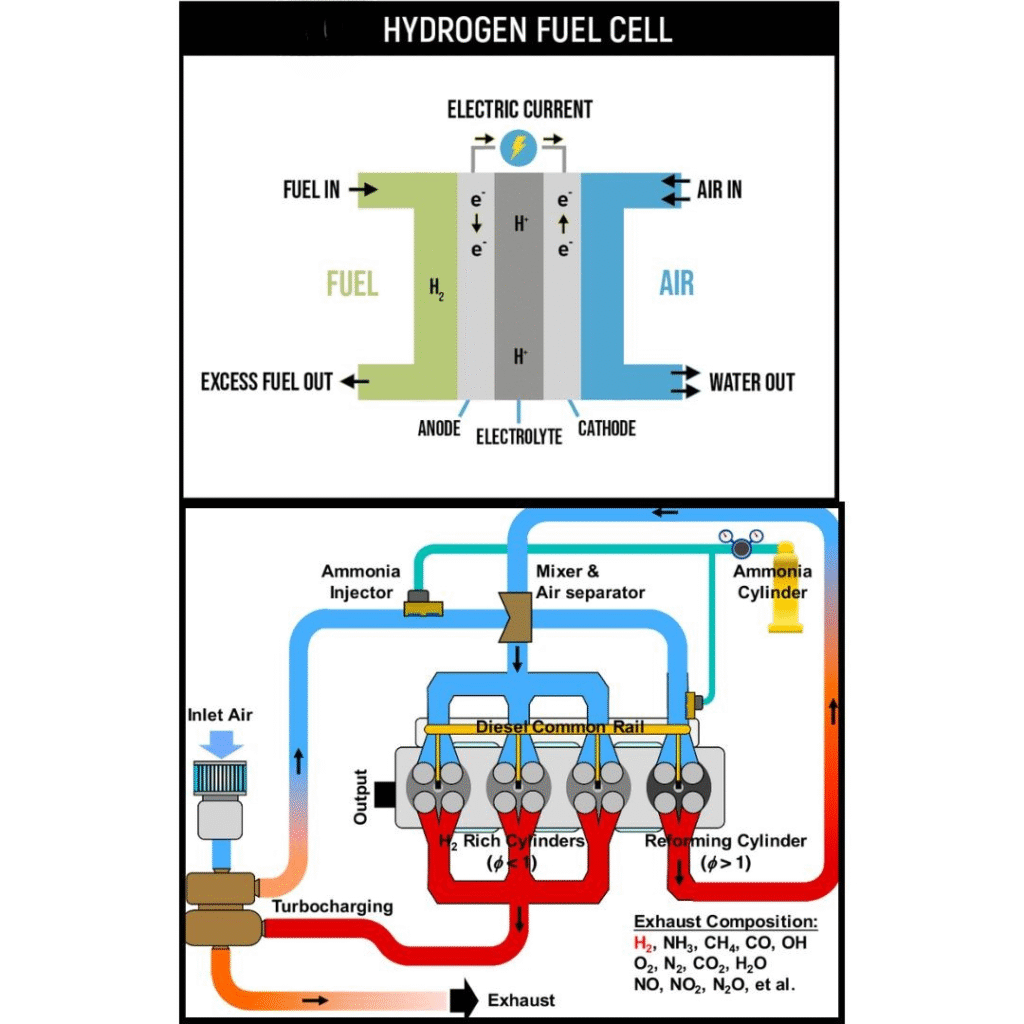Hydrogen and Ammonia: Zero-Emission Fuels Shaping the Future of Sustainable Shipping

Hydrogen and Ammonia: Zero-Emission Fuels Shaping the Future of Sustainable Shipping
As the urgency to combat climate change grows, the global shipping industry faces increasing pressure to reduce its significant carbon footprint. Responsible for about 2.5% of global CO₂ emissions, shipping must pivot toward sustainable alternatives to fossil fuels to meet international climate targets. Hydrogen and ammonia have emerged as two of the most promising zero-emission fuels, capable of powering ships without emitting CO₂. These innovative fuels hold the potential to reshape the maritime industry, offering a cleaner and more sustainable path forward.
The Rise of Hydrogen and Ammonia in Decarbonizing Shipping
Hydrogen and ammonia are drawing attention as alternatives to traditional marine fuels. Their appeal lies in their lack of direct CO₂ emissions during use.
- Hydrogen can power ships through fuel cells, generating electricity with water as the only byproduct, or via combustion in modified engines. When produced using renewable energy—termed “green hydrogen”—it becomes a fully zero-emission fuel.
- Ammonia (NH₃), a hydrogen carrier, can also power ships via combustion engines or fuel cells. Unlike hydrogen, it is easier to store and transport due to its stability at ambient conditions. However, its usage introduces other environmental challenges, such as nitrogen oxide (NOx) emissions.

Case Studies: Early Adoption and Pilots in Shipping
Several organizations are testing these fuels through pilot projects:
- Hydrogen-powered vessels: The hydrogen-powered ferry HydroBingo in Japan uses fuel cells to achieve zero-emission operation, showcasing the feasibility of hydrogen in smaller vessels.
- Ammonia-fueled ships: Yara International, a global leader in ammonia production, has partnered with shipping companies to design ammonia-fueled tankers, aiming to commercialize these vessels by 2030.

Technologies Enabling Hydrogen and Ammonia in Shipping
- Hydrogen Fuel Cells
These cells generate electricity by reacting hydrogen with oxygen, emitting only water as a byproduct. The technology is mature in sectors like automotive and rail transport, and its application to shipping could eliminate greenhouse gas emissions.
Example: Norway’s project with the MF Hydra ferry integrates hydrogen fuel cells for short-haul journeys, proving the scalability of this technology. - Ammonia Combustion Engines
Ammonia-powered engines are under development, enabling the use of ammonia as a direct fuel source. However, NOx emissions from ammonia combustion require mitigation strategies, such as Selective Catalytic Reduction (SCR) systems.
Example: MAN Energy Solutions is working on two-stroke engines designed for ammonia combustion, anticipating trials by 2025. - Electrolyzers for Green Hydrogen
Electrolyzers split water into hydrogen and oxygen using renewable electricity. The scalability of green hydrogen production is critical for meeting maritime fuel demands.
Example: Europe’s Refhyne project uses electrolyzers to produce green hydrogen at scale, with plans to expand to industrial applications, including shipping.

Benefits of Hydrogen and Ammonia as Shipping Fuels
Environmental Advantages
- Zero CO₂ Emissions: Both fuels eliminate carbon emissions during use, aligning with IMO’s goal to halve shipping emissions by 2050.
- Reduction of Air Pollutants: Unlike heavy fuel oils, these alternatives produce no sulfur oxides (SOx) or particulate matter.
- Support for Renewable Energy Integration: Hydrogen production via electrolysis can stabilize renewable energy grids by using surplus electricity.
Energy Efficiency and Versatility
- Hydrogen Fuel Cells: High efficiency in converting fuel to energy compared to internal combustion engines.
- Ammonia as a Carrier: Its liquid state at moderate pressures allows easier storage and handling compared to cryogenic hydrogen.
Challenges in Adoption
Economic Barriers
- High Production Costs: Green hydrogen is significantly more expensive than fossil fuels due to the high energy input required for electrolysis.
- Infrastructure Development: The global shipping network lacks the infrastructure for hydrogen and ammonia storage, transport, and refueling.
Technical Limitations
- Storage Challenges: Hydrogen requires cryogenic storage or high-pressure tanks, complicating onboard logistics.
- NOx Emissions: Ammonia combustion produces nitrogen oxides, necessitating additional emission control systems.
Safety Concerns
- Hydrogen’s Flammability: The highly flammable nature of hydrogen poses safety risks during handling and storage.
- Ammonia Toxicity: Ammonia exposure is hazardous to humans and marine ecosystems, requiring strict handling protocols.
A Dual-Edged Sword: The Pros and Cons
Aspect | Hydrogen | Ammonia |
Pros | Zero CO₂ emissions, high efficiency | Zero CO₂ emissions, easier storage |
Cons | Storage complexity, high production costs | NOx emissions, toxic handling risks |
Applications | Fuel cells, combustion engines | Combustion engines, hydrogen carrier |
Impact on the Shipping Industry’s Sustainability Goals
The adoption of hydrogen and ammonia could be a game-changer, enabling compliance with strict environmental regulations and improving public perception of maritime operations.
IMO 2050 Goals: The use of these fuels aligns with the International Maritime Organization’s targets to reduce CO₂ intensity by 40% by 2030 and neutralize total emissions by 2050.
Collaborative Initiatives: Partnerships like the Global Maritime Forum’s Getting to Zero Coalition are essential for accelerating research, piloting, and scaling these fuels.
Conclusion
While challenges remain, the potential of hydrogen and ammonia to revolutionize shipping is undeniable. Investment in technology, infrastructure, and regulatory frameworks is essential to overcome current barriers. With continued innovation and collaboration, these zero-emission fuels could transform the maritime industry, steering it toward a sustainable future.
Hydrogen and ammonia are not just fuels—they represent a paradigm shift for global shipping in the fight against climate change.




